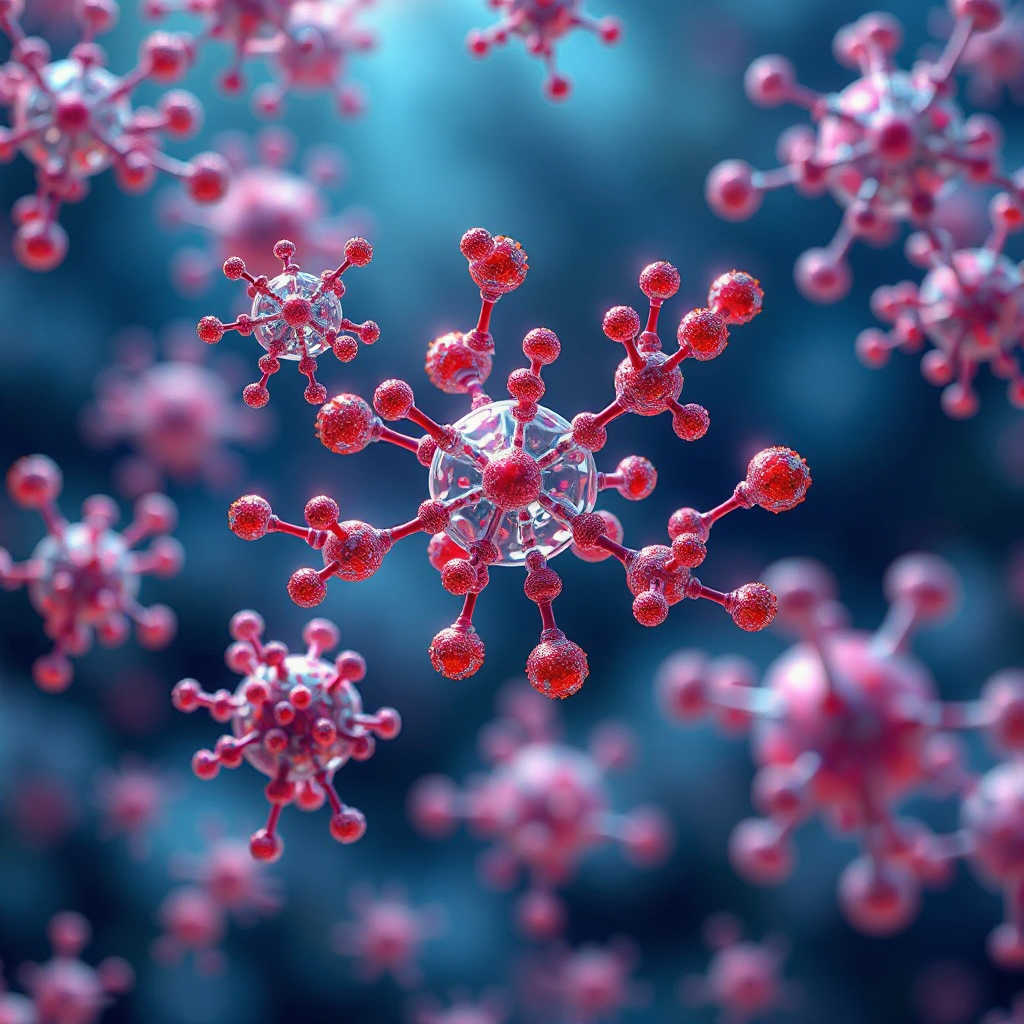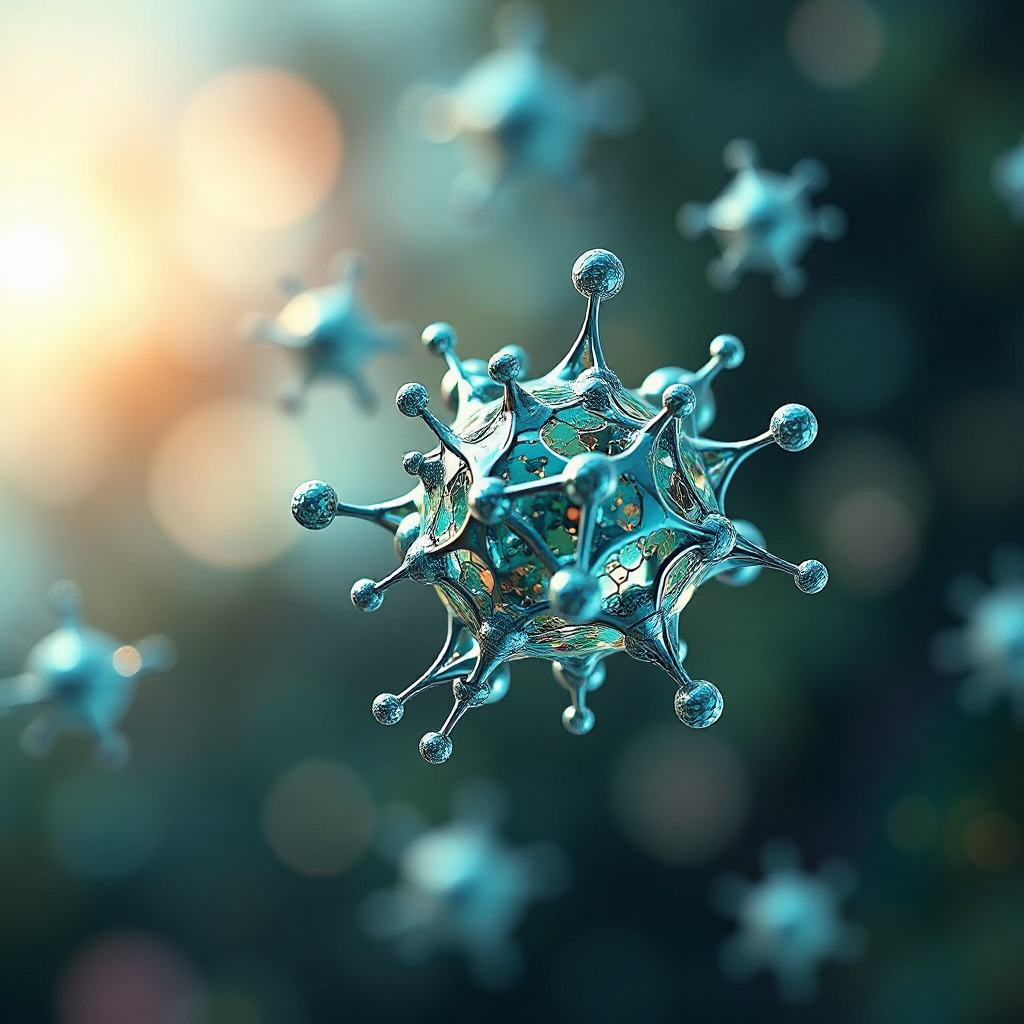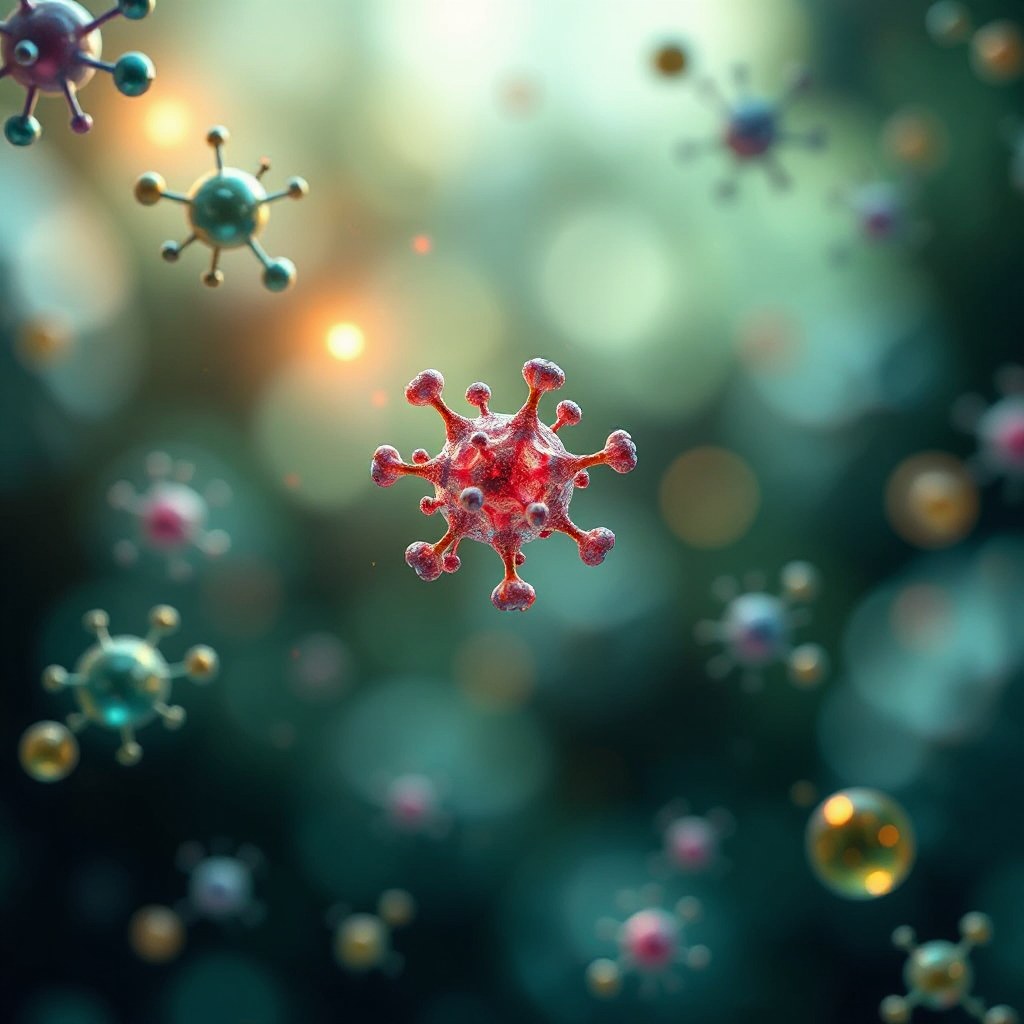What is Nanomedicine and How Does It Help in Cancer Treatment

Nanomedicine utilizes nanoscale materials and technologies to revolutionize medical care, particularly in cancer treatment. Nanomedicine for cancer treatment offers precision and minimizes harmful side effects, setting it apart from traditional therapies. By directly targeting cancer cells while preserving healthy tissues, it provides a more effective approach. For instance, nanoparticles can engage with the immune system to boost its cancer-fighting capabilities. Additionally, rapid pH-responsive nanoassemblies enhance breast cancer therapy by optimizing tumor accumulation and penetration. These innovations highlight the potential of nanomedicine for cancer treatment as a groundbreaking solution to the limitations of conventional methods.
Key Takeaways
Nanomedicine uses very small materials to attack cancer cells directly. It protects healthy tissues and causes fewer side effects.
This new method helps deliver medicine better, making treatments safer and work well for cancer patients.
Nanomedicine solves problems with older treatments, like when drugs stop working or are too harmful, helping patients recover better.
Special nanoparticles can track cancer in real-time and give custom treatments, making therapies more successful.
Scientists are studying nanomedicine to find more uses, like spotting cancer early and stopping it before it starts.
Understanding Nanomedicine for Cancer Treatment

What is Nanomedicine?
Definition and core principles.
Nanomedicine refers to the use of materials sized between 1 to 100 nanometers to address medical challenges. These materials are designed to specifically target tumor cells or immune cells, enabling applications like imaging, diagnostics, and therapy. The core principles of nanomedicine focus on precision, efficiency, and safety.
Nanotechnology enhances drug delivery to specific immune cell subsets.
Intelligent drug delivery systems improve cancer immunotherapy outcomes.
Nanomedicines deliver multiple immunological agents to targeted sites, such as tumors or lymph nodes.
This precision allows nanomedicine to reprogram or modulate the immune response by targeting specific biological pathways, making it a powerful tool in cancer care.
Overview of nanoscale materials and their medical applications.
Nanoscale materials, such as nanoparticles and liposomes, play a vital role in nanomedicine for cancer treatment. Nanoparticles improve drug distribution, protect healthy tissues, and enhance tumor-targeting efficacy. Liposomes, with their unique cell membrane-like structure, can encapsulate both hydrophilic and hydrophobic drugs, ensuring effective delivery to cancer cells. These materials also enable sustained drug release, overcoming challenges like multidrug resistance.
How Does Nanomedicine Work?
Mechanisms of action, including targeted drug delivery and diagnostics.
Nanomedicine employs several mechanisms to target cancer cells effectively:
Passive targeting through the enhanced permeability and retention (EPR) effect.
Active targeting using nanoparticles coated with antibodies or ligands.
Stimuli-responsive targeting based on environmental changes, such as pH or temperature.
These mechanisms allow nanoparticles to act like heat-seeking missiles, locating and attacking cancer cells while sparing healthy tissues. Additionally, they engage immune cells like macrophages to destroy cancer cells.
Role of nanoparticles, liposomes, and other nanocarriers in cancer care.
Nanoparticles and liposomes serve as carriers for cancer treatments. Nanoparticles can load large amounts of drugs, extend circulation times, and improve solubility. Liposomes, with their hydrophilic and hydrophobic sides, easily fuse with cell membranes to deliver drugs directly into cancer cells. These carriers ensure precision targeting, reducing side effects and enhancing treatment outcomes.
Why is Nanomedicine Important in Cancer Treatment?
Advantages of nanoscale precision in targeting cancer cells.
Nanomedicine for cancer treatment offers unmatched precision. It targets cancer cells while sparing healthy tissues, reducing toxicity and improving patient safety. This precision also minimizes side effects, enhancing the quality of life for patients undergoing treatment.
Ability to overcome challenges of traditional therapies, such as drug resistance.
Traditional cancer therapies face challenges like drug resistance, high toxicity, and poor solubility. Nanomedicine addresses these issues effectively:
Challenge | Nanomedicine Solution |
|---|---|
Drug Resistance | Improved targeting and delivery methods. |
High Toxicity | Reduced toxicity via targeted delivery. |
Poor Solubility | Enhanced solubility through nanocarriers. |
By overcoming these barriers, nanomedicine ensures more effective and safer cancer treatments.
Applications of Nanomedicine in Cancer Treatment

Enhancing Drug Delivery
Targeted delivery to cancer cells using nanoparticles
Nanomedicine for cancer treatment excels in delivering drugs directly to cancer cells. Nanoparticles, sized between 1 to 100 nanometers, act as precise carriers. They target tumor cells while sparing healthy tissues. This targeted approach reduces side effects and enhances treatment outcomes. For example, reduction-sensitive liposomes co-deliver doxorubicin and P-glycoprotein inhibitors. This method overcomes multidrug resistance, boosts anti-tumor efficiency, and minimizes toxicity.
Nanoparticles can specifically target tumor cells or immune cells.
They improve imaging, diagnostics, and therapeutic applications.
By focusing on cancer cells, nanomedicine ensures that treatments are both effective and safe.
Controlled and sustained drug release to minimize side effects
Nanomedicine enables controlled drug release, which minimizes side effects for patients. This approach ensures that drugs are released gradually and only at the targeted site.
Targeted delivery avoids damage to healthy tissues.
Minimizing harm to healthy tissues reduces side effects like nausea and fatigue.
This controlled release improves patient safety and comfort during cancer treatment.
Role in Cancer Therapies
Applications in immunotherapy to boost the immune response
Nanomedicine enhances immunotherapy by delivering immunological agents directly to tumors or lymph nodes. It modulates the immune response by targeting specific biological pathways. Advanced nanobiomaterials also allow the codelivery of drugs and immunomodulators. This combination strengthens the immune system's ability to fight cancer while reducing side effects.
Use in combination therapies for improved outcomes
Nanomedicine plays a vital role in combination therapies. These therapies use multiple treatment methods to achieve better results. For instance, dual pH-responsive nanoparticles combine immunotherapy and chemotherapy. This system delivers drugs directly to cancer cells, improving efficacy and reducing toxicity.
Examples like lipid nanoparticles in mRNA vaccines and chemotherapy
Lipid nanoparticles have revolutionized cancer treatment. They are used in mRNA vaccines and chemotherapy to deliver drugs effectively. These nanoparticles enhance drug stability and ensure precise targeting, making treatments more efficient.
Advantages Over Traditional Cancer Treatments
Reduced toxicity and improved patient safety
Nanomedicine for cancer treatment reduces toxicity by targeting only cancer cells. This precision minimizes harm to healthy tissues, improving patient safety.
Enhanced efficacy through precision targeting
Nanomedicine delivers drugs specifically to tumor sites. This precision enhances the effectiveness of treatments and reduces common side effects like hair loss and nausea.
Potential to guide surgical resection and improve treatment monitoring
Nanoparticles can also assist in surgery by highlighting cancerous tissues. This guidance helps surgeons remove tumors more accurately. Additionally, nanomedicine improves treatment monitoring, ensuring better outcomes for patients.
Challenges and Limitations of Nanomedicine for Cancer Treatment
Scientific and Technical Barriers
Issues with large-scale production and stability of nanoparticles
Producing nanoparticles on a large scale presents significant challenges. You may find that maintaining their stability during manufacturing and storage is difficult. Nanoparticles often lose their desired properties when scaled up, which can reduce their effectiveness in cancer treatment. Additionally, ensuring uniformity in size and composition becomes harder as production increases. These issues can delay the development of reliable nanomedicine therapies.
Ensuring biocompatibility and minimizing unintended effects
Biocompatibility is another critical concern. Nanoparticles must interact safely with your body without causing harmful reactions. However, some nanoparticles may trigger immune responses or accumulate in organs, leading to toxicity. Researchers work to minimize these unintended effects, but achieving complete safety remains a complex task.
Regulatory and Ethical Considerations
Complex approval processes for nanomedicine-based therapies
Regulatory frameworks often struggle to keep up with the unique properties of nanomedicine. Traditional approval processes may not fully evaluate the safety and efficacy of nanoscale products. This can lead to delays in bringing these therapies to you. Current risk-benefit assessments may also fall short in addressing the complexities of nanomedicine, complicating clinical trials and postmarket monitoring.
Ethical concerns surrounding advanced nanotechnology applications
Nanotechnology raises several ethical questions.
Nanomaterials can cause health damage due to their increased reactivity.
Some nanoparticles have been shown to cause DNA damage or pulmonary fibrosis.
Additionally, obtaining informed consent for nanomedical trials can be challenging. You might find it hard to fully understand the risks and benefits of such novel technologies. Furthermore, nanomedical devices generate vast amounts of health data, which could expose you to privacy risks if the data is misused.
Cost and Accessibility
High costs of development and treatment
Developing nanomedicine involves expensive research and advanced technology. These high costs often translate to expensive treatments, making them less accessible to many patients. If you live in an insurance-based health system, the financial burden could be even greater.
Limited availability in low-resource settings
Nanomedicine remains largely unavailable in low-resource settings. Limited infrastructure and high costs prevent widespread adoption. This creates a gap in access, leaving many patients without the benefits of these advanced therapies.
The Future of Nanomedicine in Cancer Care
Emerging Innovations
Development of smart nanoparticles for real-time monitoring
Smart nanoparticles are transforming cancer care by enabling real-time monitoring and precise treatment. These advanced particles can identify suitable candidates for clinical trials through patient stratification. They also enhance combination therapies by integrating pharmacological and physical treatments. For example, nanomedicines can modulate immune cell behavior, improving the efficacy of immunotherapy.
Tip: Smart nanoparticles act as modular tools, allowing researchers to design tailored (pro)drug and nanocarrier systems for specific cancer types.
Advances in personalized nanomedicine for tailored cancer treatments
Personalized nanomedicine focuses on tailoring treatments to individual patients. It offers controlled and targeted drug delivery, which has shown promising results in breast cancer therapy. Many patients have benefited from these therapies due to their ability to minimize side effects while maximizing efficacy.
Strategic Direction | Description |
|---|---|
Patient Stratification | Identifying individuals suitable for clinical trials through specific probes. |
Rational Drug Selection | Designing modular (pro)drugs and nanocarriers for precise targeting. |
Combination Therapies | Enhancing outcomes by integrating nanomedicines with other treatments. |
Immunotherapy | Modulating immune cells to improve anticancer immunity. |
Nanomedicine also opens new possibilities in immunotherapy, delivering anti-cancer drugs directly to tumors while sparing healthy tissues. This approach ensures safer and more effective treatments tailored to your unique needs.
Transformative Potential
Integration with AI and machine learning for precision oncology
Artificial intelligence (AI) and machine learning (ML) are revolutionizing nanomedicine. These technologies analyze vast datasets to predict how nanoparticles interact with cancer cells. By integrating AI, you can benefit from more precise and personalized treatment plans. This combination enhances the accuracy of diagnostics and optimizes drug delivery systems.
Expanding applications to early detection and prevention
Nanomedicine is not limited to treatment. It also plays a crucial role in early detection and prevention. Nanoparticles can identify cancer biomarkers at an early stage, improving your chances of successful treatment. This proactive approach helps healthcare providers intervene before the disease progresses.
Ongoing Research and Collaboration
Promising clinical trials and breakthroughs in nanomedicine
Clinical trials continue to push the boundaries of nanomedicine. Researchers are exploring innovative applications, such as using nanoparticles to deliver drugs more effectively. These trials aim to improve outcomes for patients like you by refining treatment methods and reducing side effects.
Partnerships between researchers, clinicians, and industry leaders
Collaborations drive progress in nanomedicine. Programs like the Translational Nanomedicine Program at Mayo Clinic bring together researchers, clinicians, and industry leaders. These partnerships develop cutting-edge nanoparticle technologies for cancer detection and treatment. By combining expertise, they accelerate the translation of research into real-world applications, significantly improving patient care.
Nanomedicine for cancer treatment offers numerous benefits that improve patient outcomes. It enhances drug distribution to diseased tissues while protecting healthy ones, reducing side effects. Targeted delivery of anti-cancer drugs ensures precision, while immunological agents boost the effectiveness of immunotherapy. These advancements make treatments safer and more efficient for you.
However, challenges remain. Overcoming multidrug resistance and addressing the immunosuppressive tumor microenvironment are critical for broader adoption. Researchers are also working to enhance immunogenic cell death-based therapies to improve long-term outcomes.
The transformative potential of nanomedicine is immense. It provides higher efficacy, reduced toxicity, and prolonged drug circulation. By overcoming limitations of conventional therapies, it revolutionizes cancer care, offering hope for better patient lives.
FAQ
What makes nanomedicine different from traditional cancer treatments?
Nanomedicine uses nanoscale materials to target cancer cells with precision. Unlike traditional treatments, it minimizes damage to healthy tissues, reducing side effects. This approach improves treatment outcomes and enhances patient safety.
Can nanomedicine treat all types of cancer?
Nanomedicine shows promise for many cancers, but its effectiveness depends on the type and stage of the disease. Researchers continue to explore its potential for broader applications through clinical trials and innovations.
Are there any risks associated with nanomedicine?
Nanomedicine may cause immune reactions or toxicity if nanoparticles accumulate in organs. Researchers work to improve biocompatibility and minimize risks, ensuring safer treatments for you.
How soon will nanomedicine become widely available?
Widespread availability depends on overcoming challenges like high costs, production issues, and regulatory hurdles. Progress in research and collaborations accelerates its adoption, but it may take years before it becomes accessible to everyone.
Can nanomedicine help prevent cancer?
Yes, nanomedicine aids in early detection by identifying cancer biomarkers. This proactive approach helps healthcare providers intervene early, improving your chances of successful treatment and prevention.
See Also
Recognizing Duodenal Cancer Symptoms And Available Treatment Options
Choriocarcinoma: Definition, Symptoms, And Treatment Approaches
Anaplastic Large Cell Lymphoma: Overview And Treatment Methods
Conjunctival Melanoma: Key Symptoms And Treatment Strategies
Essential Information About Carcinoid Tumors And Their Treatment
